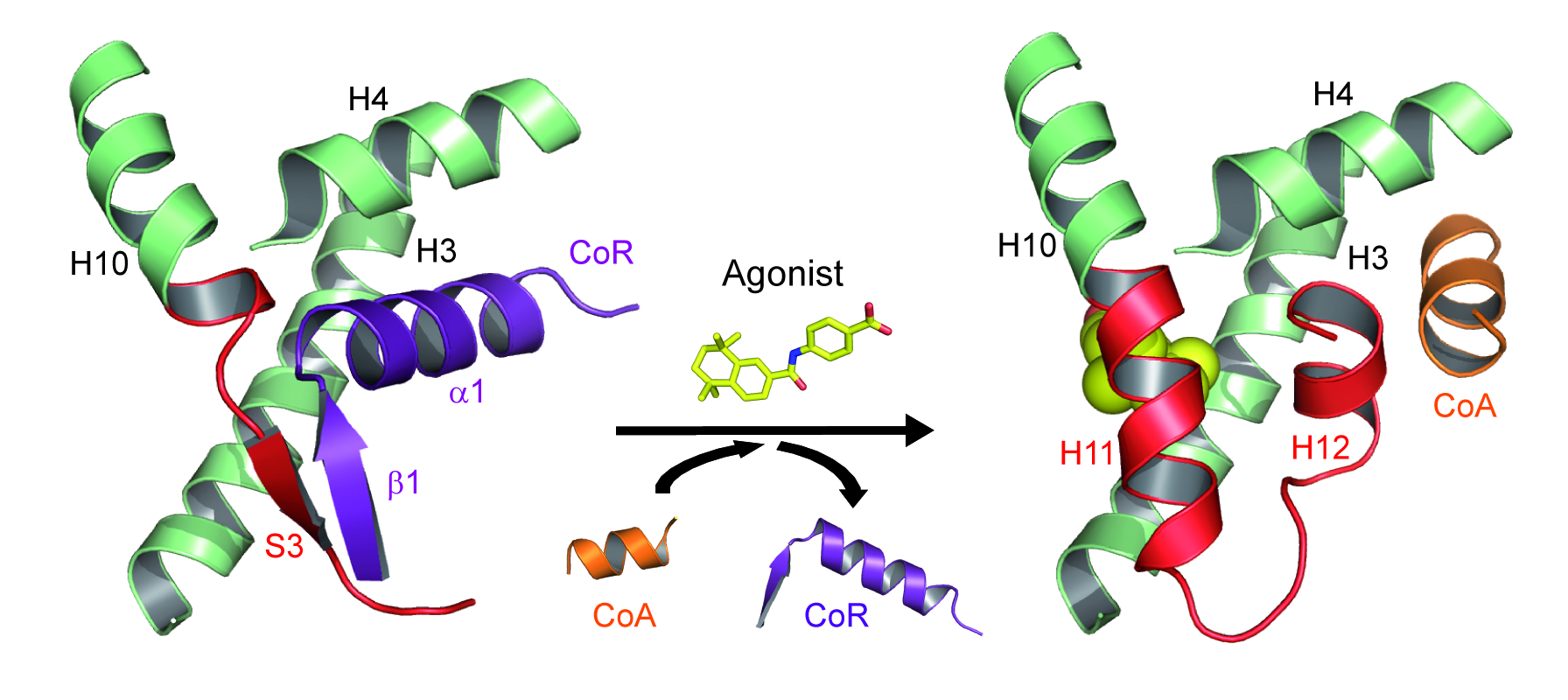A. le Maire, P. Germain, W. Bourguet
The precise regulation of gene expression requires activation and repression of DNA transcription. A number of diseases, including some cancers, originate from dysfunctional repression. The overall goal of this project is to gain mechanistic insights into the general principles governing the (de)regulation of gene repression by nuclear receptors.
 Association and dissociation of coregulators from RAR upon ligand binding (CoA, coactivator ; CoR, corepressor).
Association and dissociation of coregulators from RAR upon ligand binding (CoA, coactivator ; CoR, corepressor).
Some nuclear receptors including retinoic acid (RAR) and thyroid hormone (TR) receptors act as transcriptional repressors by recruiting corepressor complexes to target genes. However, knowledge of the precise role of gene silencing still lags behind that of gene activation, and several diseases (e.g. acute promyelocytic leukemia and renal carcinomas) have been linked to aberrant interactions between modified forms of nuclear receptors and corepressors. The goals of this project are (i) to uncover the mechanistic aspects of the transcriptional repression mediated by wild-type and mutant RARs and TRs, (ii) to decipher how this silencing activity could be modulated by natural and pharmacological ligands, and (iii) to provide molecular tools to probe the importance of this repression in physiological, developmental and pathological processes. The strength of our project resides in the synergism that emerges from the combination of biophysical, structural, cell biology, functional genomics and in vivo studies.
Main collaborators : G. Benoit (ENS Lyon), F. Flamant (IGFL Lyon), N. Ghyselinck (IGBMC Illkirch), P. Veber (LBBE Lyon), M. Privalsky (UC Davis USA), AC. Figueira (CNPEM Brasil), A. Yunes (Boldrini Brasil).
References : le Maire et al., Nat. Struct. Mol. Biol., 2010 ; Germain et al., Chem. Biol., 2009 ; Nadendla et al., Plos One, 2015 ; Sharman et al., NAR, 2011

